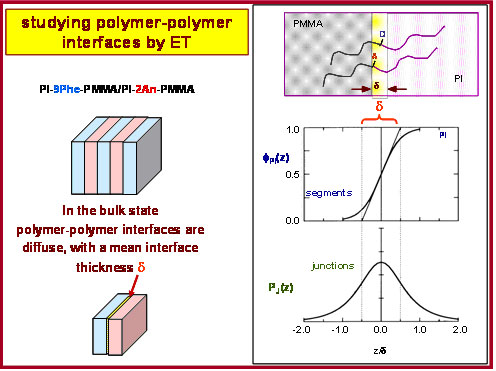The Polymer and Colloids Group
One of the strangest aspects of energy transfer experiments is that when the donor (D) and acceptor (A) dyes are confined to small domains, the overall kinetics of ET become sensitive to the size and shape of the confining space. This effect occurs because the D's at the edges have a different distribution of A's than those far from the edge. This means that ET can be used as a tool to probe the dimensions of domains with nanometer dimensions in polymer materials.
We use this technique to study the nature of interfaces that exist between the microdomains formed by block copolymers through self assembly in the bulk state. As the figure below shows, when block copolymers undergo microphase separation, there is a thin interface separating the two components. According to theory, this interface is normally on the order of a few nm thick. It is normally very difficult to obtain precise and reliable measurement for these interfaces. We synthesize block copolymers with a single dye (D or A) at the junction, and these become confined at the interface. We combine careful fluorescence decay measurements of the ET kinetics with mathematical simulations to learn about the nature of the interface. [see Macromolecules, 38, 1256-1263 (2005)]
Our long term goal is to learn to apply this technique to polymer blends, where the nature of the interfaces between the polymers are thought to play an important role in determining polymer properties.
